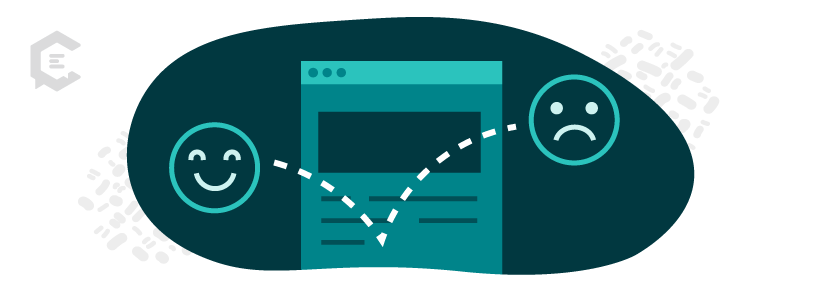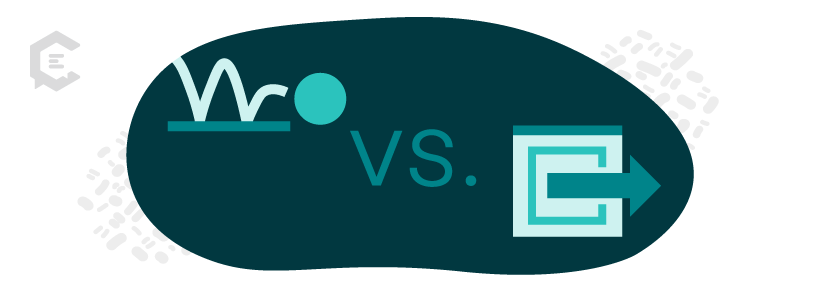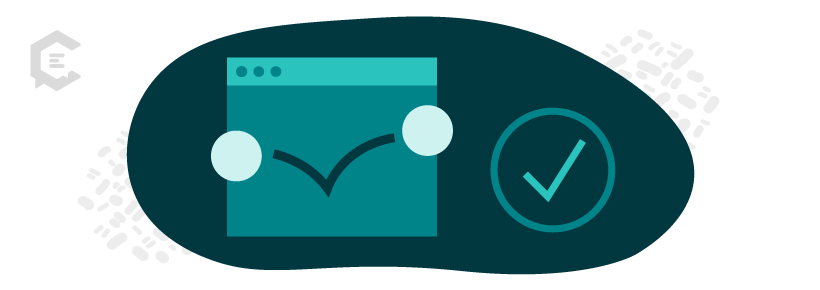What is a bounce rate?
Bounce rate measures the number of people who arrive at your website or landing page, do not take action, and then leave. In other words, it represents the percentage of visitors who “bounce” off the website.
A high bounce rate indicates visitors are not engaging with the content or finding what they were looking for, causing them to leave the site quickly. Websites with a single landing page containing all the desired information may have a high bounce rate due to their simple design.
A low bounce rate is the goal, as it suggests that visitors are finding value in your content, exploring multiple pages, and engaging with your website. However, it’s important to consider the overall user experience, as more than a low rate is needed to indicate success.
Factors that can influence bounce rate include:
- Website Design
- Relevance Of The Content
- Loading Speed
- Ease Of Navigation
- Overall User Experience
Why is monitoring your bounce rate so important?
Bounce rate provides insights into how engaged visitors are with your website. A high rate suggests visitors are not finding what they’re looking for or need to be sufficiently engaged to explore further. By monitoring the bounce rate, you can identify areas for improvement to enhance user engagement and increase the likelihood of visitors staying longer on your site.
Your SEO can also be crucially affected by your bounce rate. Search engines like Google consider your bounce rate in their algorithms when determining the relevance of your website.
A high bounce rate is a killer of conversions. If it’s too high, it may indicate that you are missing opportunities such as sign-ups, form submissions, or purchases. By monitoring your bounce rate, you can better identify areas where visitors drop off and implement strategies to improve user engagement.
What’s the difference between a bounce rate and an exit rate?
Bounce and exit rates sound similar, but what they reveal about your website differs greatly. A bounce means someone came to any page of your webpage, perhaps scrolled, but ultimately didn’t click anything and left. Your exit rate determines which page a user left after spending time on your site. So, this lead clicked on the homepage, navigated to About, browsed your products, and exited. The exit rate determines which pages have the most exits based on sessions.
Because these two are so closely linked, it can take time to dig deep into your analytics to see the true bounce rate of a website. Most of the time, it’s better to take it page by page since not all website sections are designed for conversion.
For instance, say a lead lands on your About page rather than the homepage. Since this isn’t a sales-focused portion of your domain and is meant to inform, it’s reasonable that it has a high bounce rate. However, if they find your homepage loaded with promotional copy, data, and compelling copy and still bounce, it’s potentially a reason to raise concern.
How can you lower a bounce rate?
There are a few best practices to put in place to help you get that rate down.
Improve Website Loading Speed
It may seem obvious, but people will not stick around if your website runs slowly. Get that speed up by minimizing file sizes and using caching techniques to deliver faster loading times.
Enhance Content Relevance
Our users’ attention spans continue to shrink, so you need to make it easy for them to find what they’re looking for. Ensure your headings, subheadings, and formatting are clear and easily scannable.
Refine User Experience (UX)
Ensure your website has intuitive navigation, easy-to-use menus, and clear calls to action (CTAs). Don’t forget to make it mobile-friendly and provide a seamless experience no matter the device.
Improve Internal Linking
Internal linking within your content will guide visitors to related articles, product pages, or relevant resources on your website. This helps visitors discover more of your content and reduces the likelihood they will bounce.
Analyze and Act on User Data
Tools like Google Analytics can help you gain insights into which pages have high bounce rates and help you identify any patterns or issues. Regularly monitoring this data will lead to more informed decisions on lowering those rates.
Of course, content marketing can be a game-changer for your bounce rate. After all, if your copy isn’t clear and concise with straightforward messaging, you may confuse your reader. So the key to an engaging website is to clarify your goal: Do you want them to set up an appointment? Buy a product? Subscribe to a newsletter? Each page should articulate its purpose.
Common Uses for a Bounce Rate
- It measures the success of a page based on its unique purpose.
- It helps marketers to understand confusing or complicated copy.
- It points to potential technical issues that need to be resolved.
- It allows marketers to know which pages are the most engaging and interactive.
- It can help you reach traffic goals by shifting your strategy.
Reduce your bounce rate with better copy from ClearVoice. Our team of strategists, writers, and editors can expertly craft copy that converts, helping you get more leads and customers year-round. Talk to a content specialist today to get started.






